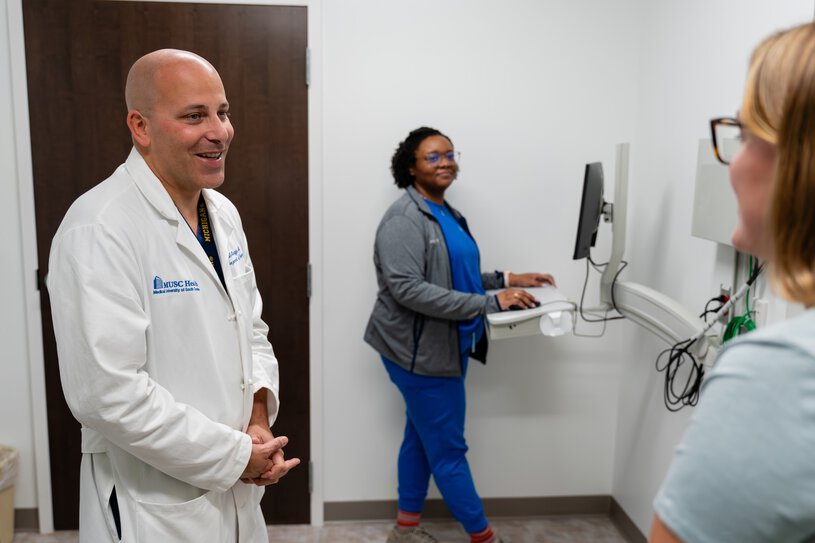Surgery offers the best chance to stop many types of cancer. It also plays a part in diagnosing, staging and supporting cancer treatment.
Having surgery for cancer is different for every person. The type of surgery will vary depending on the type of cancer and the person's health.
MUSC Hollings Cancer Center's surgical team specializes in treating cancer patients and includes fellowship-trained surgical oncologists – doctors who completed a surgery residency and then did extra training in surgery for specific cancers.
We are at the forefront of laparoscopic and endoscopic techniques for cancer surgeries that have previously been done via a full, open incision. These minimally invasive techniques improve precision and reduce the surgical impact on patients, including the reduction of tissue damage and post-surgical pain while promoting a faster recovery.
A team of surgeons are trained in the use of the da Vinci® Surgical System, a robot that helps to increase surgical precision and shorten recovery time. Surgeons receive specialized training on the device, which is being used to treat prostate, thoracic, head and neck and gynecologic cancers.
Our surgeons also participate in research to improve care. Examples include a clinical trial of a fluorescing dye to see whether it can illuminate nerves during head and neck cancer surgery and a trial of whether Heated Intraperitoneal Chemotherapy (HIPEC) during surgery for ovarian cancer improves outcomes.





